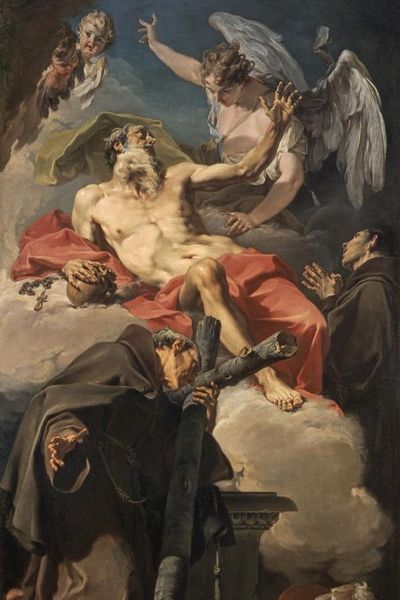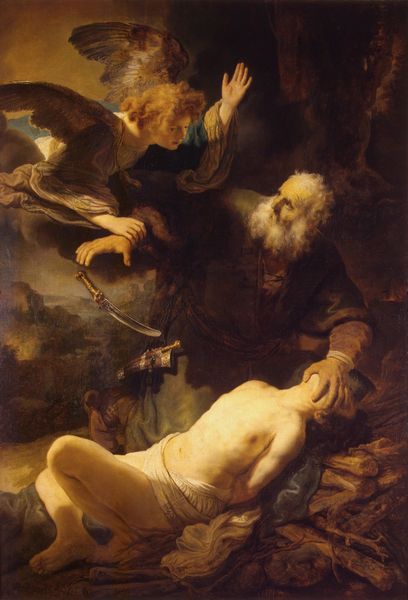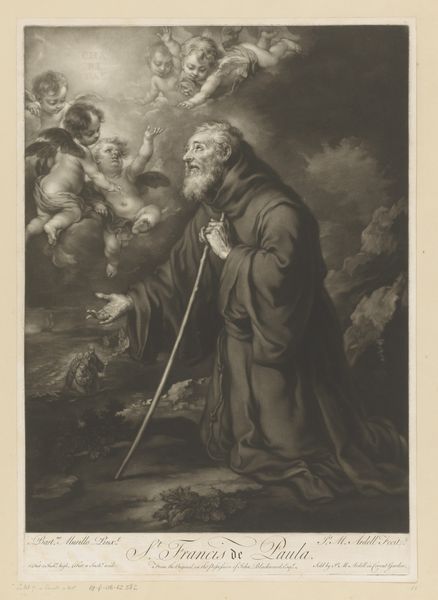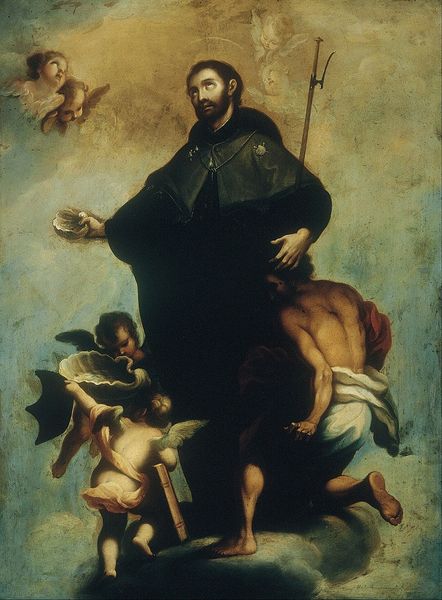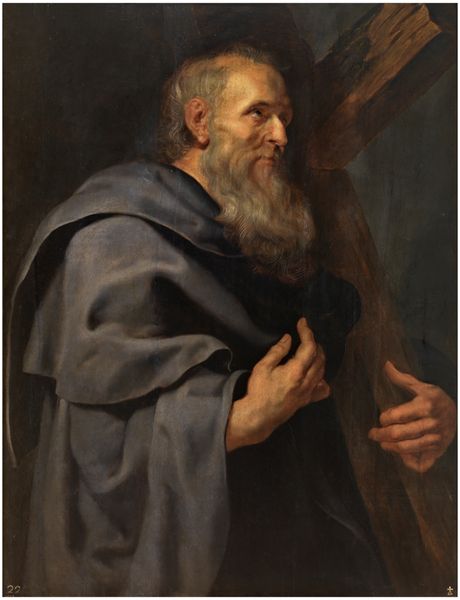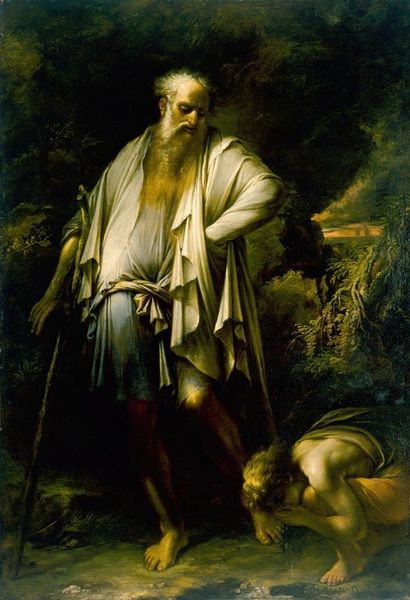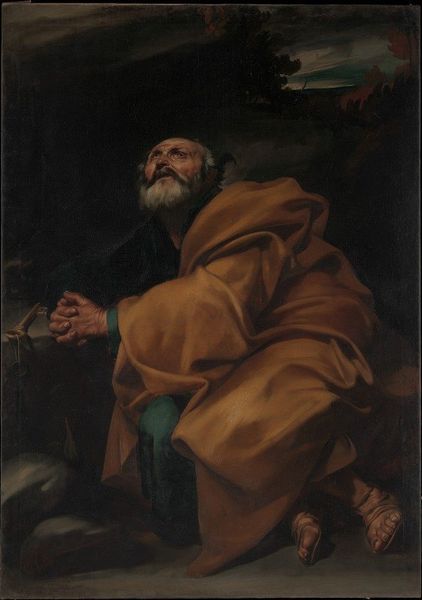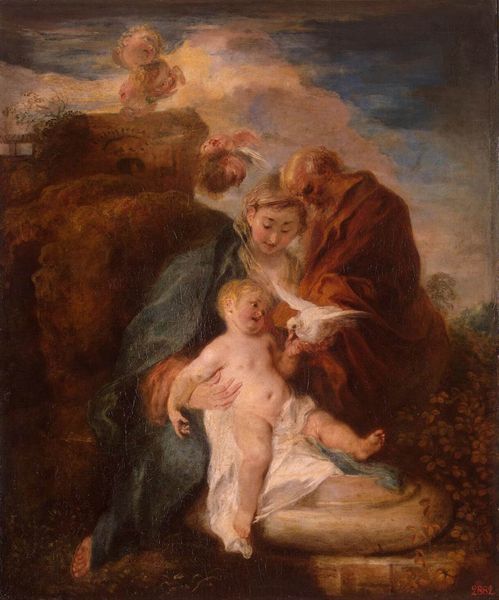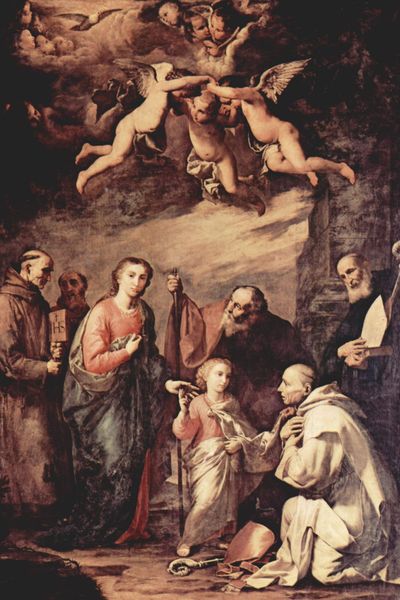
painting, oil-paint
#
baroque
#
painting
#
oil-paint
#
history-painting
Copyright: Public Domain: Artvee
Curator: This painting, “The Vision of Saint Francis of Paola,” was completed by Bartolomé Esteban Murillo around 1670. Murillo, known for his contributions to Baroque painting, presents us with this oil painting that illustrates the saint’s divine experience. What strikes you first? Editor: Immediately, the materiality! Look at the earth tones, the deep browns and blacks used so heavily. It gives the painting such weight, such… humility almost. I’m interested in what kinds of pigments Murillo would have had access to achieve these effects. Curator: Humility is a perfect word for it, the weight of the earthly contrasted with the airy lightness of the cherubic figures above, literally labeled as 'Charitas' – Charity. It’s like a burst of grace breaking into a grounded reality. The artist's almost whispering vision of spiritual elevation. I find myself drawn to the saint’s expression. There’s so much wonder there, such innocent awe. Editor: Absolutely, and it's crafted so deliberately! The impasto seems subtle, mostly focused on the figures – it speaks volumes about how he considered both technical skill and how a viewer in a domestic or sacred space would understand divinity through skilled painting of textures and form. Even how he’s draped – you can tell so much thought and labour went into creating each fold. The fabric, how it moves… it all reinforces the material essence that conveys a religious theme. Curator: It’s truly masterful, the way the tangible becomes a portal to the intangible. What resonates is how Murillo humanizes the divine. It isn't just a grand spectacle, but a tender, intimate encounter, wouldn't you agree? Editor: I agree, it gives us a way to imagine devotion as physical, like a crafted response through both artistic choices and devotional activity. Thanks for opening this vista! Curator: The pleasure’s all mine. It's those connections—between earthly and the ethereal—that render the art so captivating, each brushstroke, the blend of pigment and light – echoes of our own aspirations, even centuries later.
Comments
No comments
Be the first to comment and join the conversation on the ultimate creative platform.

